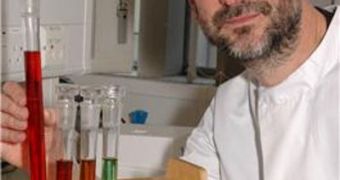The quest for artificial blood is not something that can only be seen in vampire movies. Over the past two decades or so, researchers around the world have been engaged in a desperate effort to produce a viable alternative to human blood. A breakthrough in this field could see medicine taking a giant leap forward. At this point, blood is associated with the possibility of rejection, side-effects, pathogen contamination and incompatibility. If artificial blood can be produced in laboratories, it could be made “to order,” in the sense that even the rarest of blood types (AB IV) could be produced in the needed amounts to benefit people who require it.
British researchers have received over the years more than a billion pounds in research funds for achieving this elusive goal. At the forefront of research are scientists from the University of Essex. The team here has just recently applied for a worldwide patent on a method of producing artificial hemoglobin. This compound is arguably the most important component of blood. When in the lungs, it binds to oxygen molecules, and then carries them throughout the body. On the return trip, it collects carbon dioxide, which it then passes on to the air in the lungs. During the exhale phase of breathing, the toxic compound is eliminated. As it moves through the human body, hemoglobin changes its color from red to claret, depending on the amount of oxygen it carries.
UE biochemist and blood substitute expert, Professor Chris Cooper reveals that one of the main reasons why artificial blood substitutes have yet to be developed is the fact that hemoglobin cannot be reproduced easily. When taken out of the protective layer that is the immune system's red cell, the compound can become toxic, producing free radicals that attack the heart and the kidneys. “The trick with artificial blood is to modify the molecule to be less toxic, but still perform the vital role of carrying oxygen around the body. No one has managed this yet,” the professor adds.
Thus far, the UE team managed to produce a less-toxic type of hemoglobin, which is why it is filing for patent protection. However, it admits that the work on synthesizing artificial blood is still far from over. There are numerous other issues to be taken care of, it adds, including creating the carrying mechanism for the artificial compound, and managing to create all blood types directly inside research laboratories. The race, as they say, is still on, AlphaGalileo reports.

 14 DAY TRIAL //
14 DAY TRIAL //